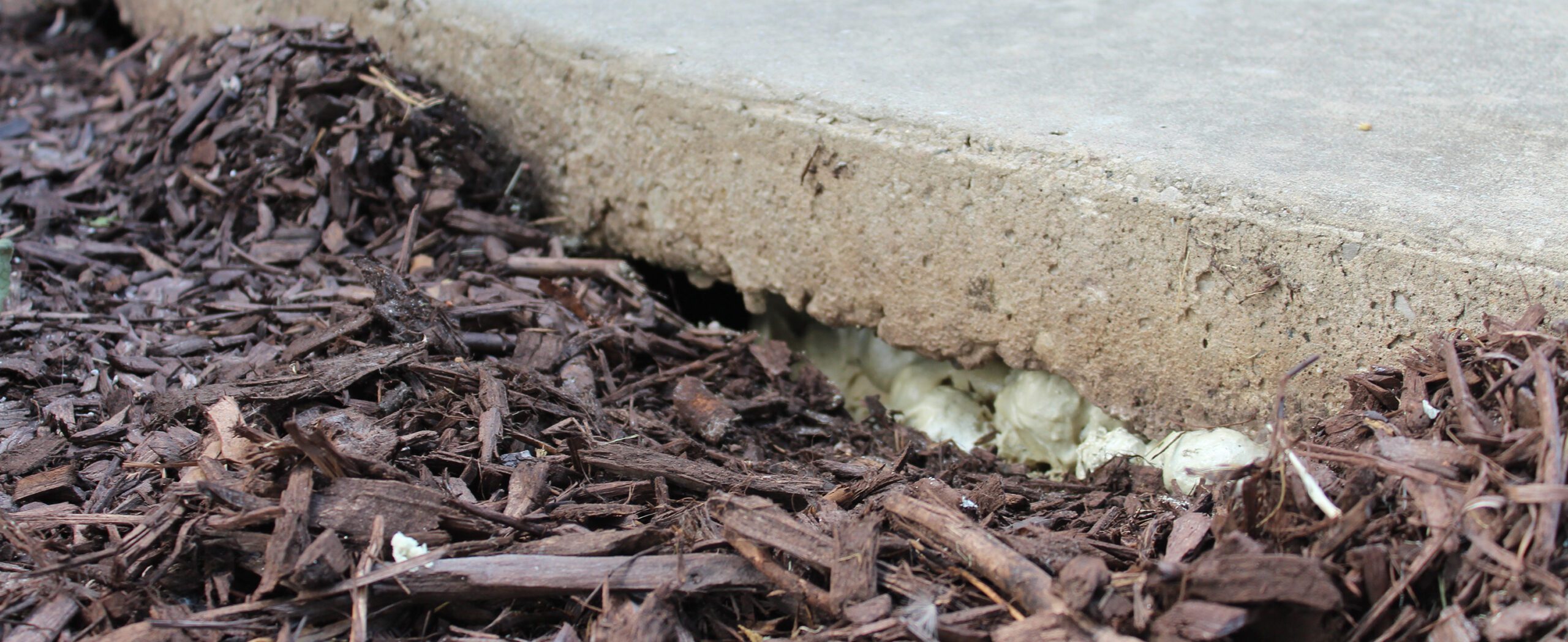Limestone or Foam

Our company offers 2 materials to choose from when it comes to concrete leveling, limestone and poly foam. Each of the materials have their own applications and benefits but both will get the concrete raising job done! During a free onsite estimate, one of our trained professionals can recommend which product might be best for your project. Below are a few of the important differences between the 2 materials, to help make your decision making process go smoother. If you have any questions, feel free to contact us, or for more general information, visit our FAQ page.
the differences
Concrete raising with limestone requires a larger sized hole because of the viscosity of the material. We drill 1″ holes to pump limestone whereas the foam only requires a 5/8″ hole. For decorative concrete, pool decks and large driveways where lifting multiple slabs is necessary, we generally recommend using foam so the holes are less visible.
Limestone is a material that is substantially less expensive than foam. Depending on the type of foam used, it can be 4-6 times more expensive than concrete raising with limestone. Recommendations are dependent on the amount of material needed to complete the project and the client’s budget for the project.
When using limestone to raise concrete, we mix the slurry for each project onsite. This gives us the ability to adjust the thickness of the material as needed to ensure proper spread for each application, whereas the foam remains the same consistenc and great spreadability no matter the application. In addition, limestone does not expand like foam. This means the void filling and raising of concrete happens with limestone simultaneously as the equipment is pumping. With foam, after pumping material, there is a pause to allow the material to expand and therefore the reaction is delayed.
For most residential applications, limestone or foam are suitable options. However, there are certain applications where limestone should not or cannot be used. Such as, soil stabilization, underground water displacement and some seawall repairs.
the similarities
We care about the types of products we offer and their impact on the environment. Limestone is a natural material derived from the earth with no added chemicals and we source it from our own beautiful state of Michigan! The foam we use is also environmentally friendly and the greenest polyurethane foam on the market. It is USA made from 40% recycled materials and there is no other product on the market that offers that much of a reduced carbon footprint. It is made fresh specifically for our company as soon as we place our order, not sitting around in a distribution center. Neither material will leach chemicals into the surrounding ground. Click here to read the environmental statement on polyurethane foams and research.
Concrete raising with either foam or limestone is still a far more cost effective solution than concrete replacement. On average, we find the saving are around 50%
With either material, your concrete is safe to walk on same day and safe to drive on after the holes patches have cured which is usually less than 24 hours.
Limestone and foam concrete raising are both permanent solutions. The limestone solidifies under the slabs and the foam expands and will not change shape. As long as there is no further settling or erosion of the soils under the material used, both are quick, long term concrete repair solutions
There is less clean up when using foam as compared to using limestone. However, due to the wait times for the foam to expand, the entire concrete raising process takes about the same mount of time with either material.
